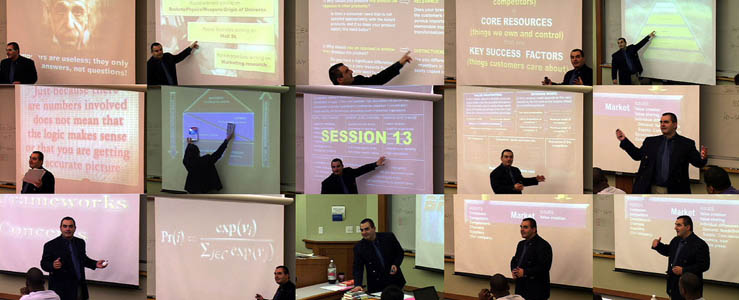Part 1 of this series was about showing numbers so that your audience can quickly and accurately interpret their meaning. In this article, I will share things that I have found useful in putting together a presentation for a small audience.
In many ways, presenting to a small audience is more challenging than presenting to a large group (stage fright aside). In my experience, you can expect more detailed questions with a small audience.
Let’s assume you are in the process of preparing a presentation for stakeholders on the status of your project. Here are some points that I found helpful while preparing your presentation:
Know your audience
Who asked you to make the presentation? Who else will be attending the meeting? Who are the opinion leaders? Consider creating a stakeholder map to clarify who will be supportive or critical of the project. The smaller your audience, the more important this step is.
Understand expectations
Does your audience expect you to make recommendations in addition to presenting information? Do they expect to receive handouts in advance of the meeting? How much background information do they need?
Clarify your goals
What do you want to achieve with the presentation? Do you want to inform, motivate, or persuade the audience? Do you need the audience to reach a decision or to take an action? How will you know if you have achieved your goals?
Define your message
The Minto Pyramid Principle can help you structure and present your reasoning in a convincing way. Although the method is complex, the basic idea is that you decide on a main message and support it with several facts or a logical argument.
Example: The project is on target [Main Message] because we are within budget [Fact A], on time [Fact B] and the customer is satisfied [Fact C].“
You can also build your argument using a logical chain. This is especially helpful if you want to convince the audience to support a decision.
Example: „We should research and decide on a standard software package [Main Message]. Standard software is available [Fact A] and we do not have time to develop custom software [Fact B], therefore it makes sense to use standard software [Conclusion].“
A good way to help prepare your logical pyramid is to read your message out loud and then ask yourself „why?“ The answers you come up with will form a logical chain supporting your message.
Ask yourself questions
The most important lesson that I learned from the Minto technique is to ask myself questions while preparing a presentation. This helps me put myself into the audience’s frame of mind and to look at a problem from different angles. It also helps me to anticipate questions the audience will ask.
Make an outline
Determine the overall content flow for the presentation—what messages do you want to communicate and what arguments will you make to back them up. At this point I sketch out my ideas on paper. After determining the message I begin to note ideas for illustrations and plan the introduction.
Decide on how to show the numbers
See Part 1 of this series for more information on using tables and charts.
Determine media
Will you use PowerPoint or just a handout? I use PowerPoint mainly for visual explanation with illustrations and a few key phrases. Facts, figures and other important information are better communicated in a handout. In addition to handouts and slides, I prepare personal notes that I refer to during the presentation to remind me of the agenda, key phrases and quotes.
Be prepared to make recommendations
Keep in mind that you will often be expected to recommend next steps. You will gain credibility by suggesting actions and backing up your recommendations with good arguments.
Pose questions to stimulate discussion
As Stephen Few says, quantitative information often invites questions that need to be addressed. As a presenter, you may provide great value by asking an important question that stimulates discussion. As many of us have experienced, the person who asks the question is usually the one who gets to do the work needed to answer it ;-).
Always provide handouts
If you use PowerPoint for the handouts, make sure that the text size is large enough to read. Provide your audience with clear, detailed information that they can refer to for further study and analysis. Don’t forget to include your contact information on the handouts.
Additional Resources
Minto, Barbara. The Pyramid Principle: Logic in Writing & Thinking. Prentice Hall: 3rd edition, 2002. Presentation Zen: Garr Reynolds blog on issues related to professional presentation design
Image: Teaching my first weekend MBA class at Haas by Jose C Silva licensed under CC BY 2.0



